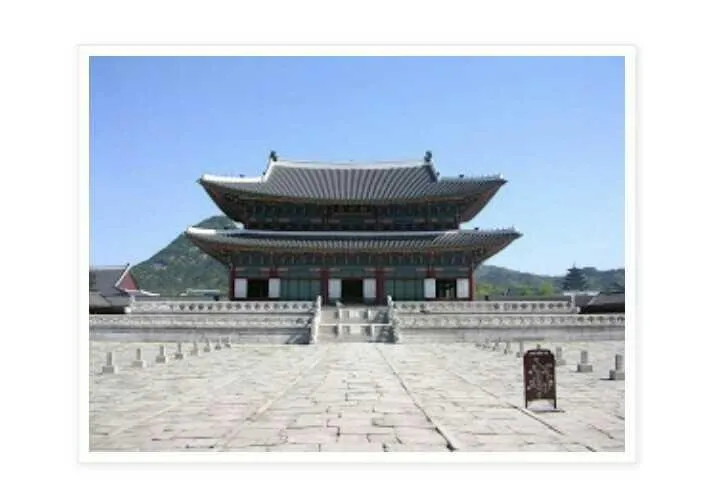
Gyeongbok Palace is a palace located north of Seoul (Gangbuk), South Korea. The palace is composed of 5 large palaces and is the largest built by the Joseon Dynasty.
Gyeongbok Palace was originally founded in 1394 by Jeong do Jeon, an architect. The palace was destroyed during the Japanese invasion of Korea in 1592-1598 and was rebuilt during the 1860s with 330 buildings with 5,792 rooms. Standing on an area of 410,000 square meters, Gyeongbok Palace is a symbol of the majesty of the kingdom and the people of Korea. After the killing of Maharani Myeongseong by Japanese spies in 1895, King Gojong left this palace with his other family members and will never return.
In 1911, the Japanese government that was colonizing Korea destroyed all its buildings except 10 main buildings, and built the Main Government Building of Japan for the governor-general of Korea in front of the Throne Chamber.
The main buildings of the Gyeongbok Palace include the Geunjeongjeon, the King's Throne Room (which is South Korea's national treasure number 223) and the Gyeonghoeru Pavilion (national treasure number 224) which has a lotus pond and 48 rocks pinned granite.
Gyeongbok Palace is currently open to the public and the National Folk Museum of Korea stands in it.
Many Koreans are hoping his government can restore the original form of the palace. Thanks to archaeologists' hard work, 330 buildings were successfully rebuilt. Currently the entrance gate of the palace (Gwanghwamun) is being renovated to be remade as it originally and is expected to be completed in 2009.
Gyeongbokgung was the main palace during the Joseon Dynasty (1392-1910). It is one of five palaces in Seoul. The palace has kept history for over 500 years.
The palace was built by the founding King of the Joseon Dynasty, Lee Seong-Gye, in 1395 when the capital of the State was moved from Gyeseong to Seoul. The palace is in the northern part of Seoul. The palace is also often called by the name of Bukgwol.
Gyeongbokgung stands on an area of 180,000 m2. In the southern part there is the main gate of Gwanghwamun, in the south there Sinmumun, east there is Yeongchumun, and in the west there is Geonchunmun. Inside the palace, there are several main buildings, namely Geunjeongjeon, Gyotaejeon, Jagyeongjeon, Gyeonghoeru, and Hyangwonjeong. Geunjeongjeon is the main building where there is a great paseban, and a morning meeting. In the front yard, there are three footpaths of granite. A slightly taller walkway in the middle is a path for the king, while the other is for the audience.
Jagyongjeon is the place where the mother of the King rested. This place is famous for its wall full of flowers and Sipjangsaeng gulduk (chimney). Guldduk is referred to as the most beautiful ever made during the Joseon Dynasty reign, and included in the list of National Heritage number 810. Gyotajeon is the private territory of the empress. This place is very fascinating because the walls and the entrance to the back directly facing to Mount Amisan, and the scenery here is very beautiful and charming.
One thing that makes Gyeongbokgung look elegant is the teratainya pool, namely in Gyeonghoeru and Hwangwonjeoung. Gyeonghoeru is a place where prominent people from other countries meet, and where special festivals are held when there are celebrations in the kingdom. Hwangwonjeong is behind the resort, and is in the backyard. Here there is also a lotus pond, but has a more feminine feel if dibangdingkan with that in Gyeonghoeru. Its architectural style takes advantage of the Amisan Mountain scenery, making it a sight